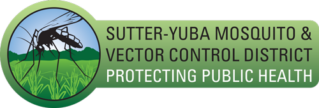Mosquito development can be broken into four stages. The first stage begins when a mosquito lays her eggs. Eggs are laid in groups called rafts in some species and are laid singly, one at a time, in others. Egg rafts are laid directly on standing water. Usually these eggs will hatch within 2-3 days. Most mosquito species that lay their eggs singly lay them on muddy or damp soil. These eggs may remain dormant for long periods of time until the ground becomes flooded again. After flooding or coming into contact with water, they hatch, often within minutes of being submerged. Small mosquito larvae called “first instars” hatch from the eggs. Larvae could be compared to the caterpillar stages of butterflies.
Mosquito larvae go through four stages called instars. The larvae grow during each instar until they reach a point where they must shed their exoskeleton (molt) in order to increase in size. This process repeats itself three more times. After the 4th molt, the larvae are fully developed and enter a pupal stage (similar to a butterfly’s cocoon). In this pupal stage, larval structures change or metamorphose into adult structures. When this change is complete, an adult mosquito will emerge from the pupal case.
Newly emerged adult mosquitoes are not able to fly at first. Generally, 12-14 hours must pass before their bodies are fully developed and capable of flight. The whole process from hatched egg to flying adult takes between 4 and 14 days. Variables such as food availability, temperature and day length have a large influence on the time necessary for mosquitoes to develop. Most mosquitoes mate in swarms, normally at twilight. Once a female mosquito has mated, she will remain fertile and will not have to mate again to lay more eggs. After mating, the female will require a bloodmeal to help her eggs grow and develop. Before she can lay eggs again, she will need another bloodmeal. Occasionally mosquitoes live long enough to lay eggs several times. Some autogenous species are able to develop their eggs, mainly their first brood of eggs, without taking a bloodmeal. Male mosquitoes do not have mouthparts suited for biting and taking blood. They feed primarily on flower nectar and plant juices. Adult female mosquitoes then finish the reproductive cycle by laying their first batch of eggs.
